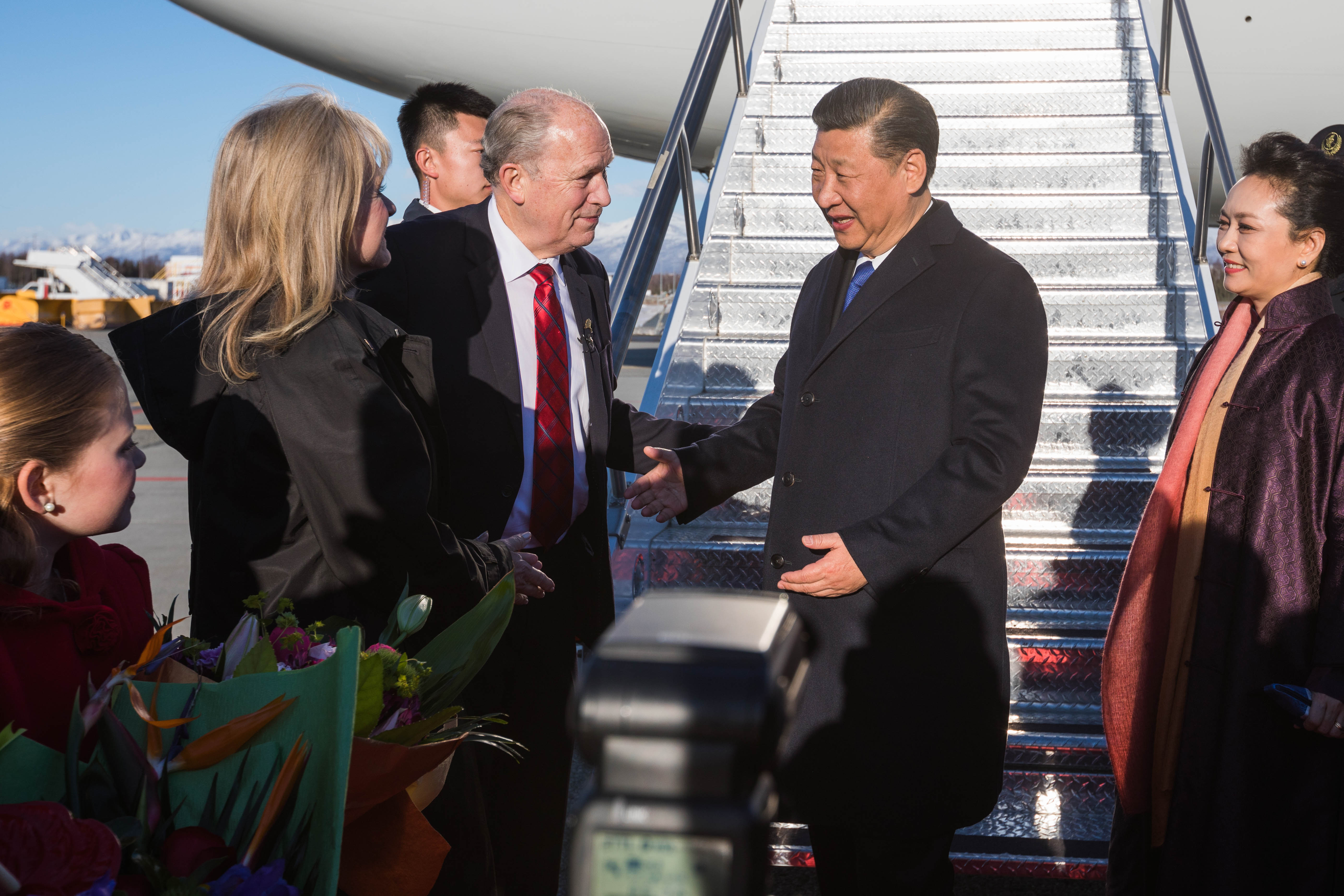Alaska-China LNG deal was the result of careful — and ongoing — work, says governor

The newly signed agreement for Alaska to work with major Chinese institutions to advance a massive North Slope natural gas project was the product of a carefully cultivated relationship that will continue, Gov. Bill Walker said.
The joint development agreement signed earlier this month in Beijing brings Sinopec, the Bank of China and the China Investment Corporation onto the team to develop a project sending natural gas from Arctic Alaska to Asian markets. That document, signed in the presence of President Trump and Chinese President Xi Jinping , followed months of meetings and discussion, Walker said in a speech last week to the Resource Development Council for Alaska.
[A natural gas project in Alaska’s Arctic gets Chinese backing]
The intensity of the exchanges picked up after Xi visited Trump at the president’s Mar-a-lago resort in Florida in April, Walker said in his speech at the Anchorage conference. After the Florida visit, Xi made a high-profile stopover in Anchorage to talk trade and tourism. Alaska officials visited China, and vice versa, he said. At the National Governor’s Association meeting in July in Rhode Island, for example, the Chinese Chamber of Commerce attended and held a special dinner at which a single US state governor was hosted – that of Alaska, Walker said.
“We have a relationship with China,” Walker said. “And they’re interested in Alaska.”
The natural gas agreement does not commit any institution to paying for the LNG project, which would involve an approximately 800-mile pipeline from Alaska’s North Slope, a massive liquefaction plant and about $43 billion in construction costs.
But it does bring “buy-in” at the highest levels of Chinese government and business, Walker said. The Chinese institutions represent a major customer, banker and investor, he said. “I believe we do have the right participants involved,” he said.
Beyond the long-desired natural gas project, Walker said he and his administration will continue to push for more Alaska business with China. China is already the state’s biggest trading partner, with business dominated by Alaska seafood exports, but Walker believes there are other important opportunities.
Right now, the administration is working on establishing direct passenger flights between Asia and Alaska, Walker said at the conference. That means a trip of “seven hours, versus 17, 18, 20 hours,” he said.
Geographic proximity by air and sea is an important selling point for Alaska, he said. “The relationships that we’re building at the highest levels in China — seven hours away, seven to eight days away by shipping, competing with the Gulf Coast at 30, 35 days going through the Panama Canal — we have some advantages,” he said.
Sometime next year, the state will send business representatives to China to try to capitalize on those advantages, Walker said.
“I am putting together an Alaska business trade mission to china from Alaska,” he said. “We’re going to be able to take businesses from Alaska that have a product or desire to work with the Chinese government, Chinese companies. Having seen what the interest was on the national level, I know at the state level we’ll do very, very well.”
That trade mission is still in the planning phase but expected to be conducted in the spring or summer, Walker spokeswoman Grace Jang said.